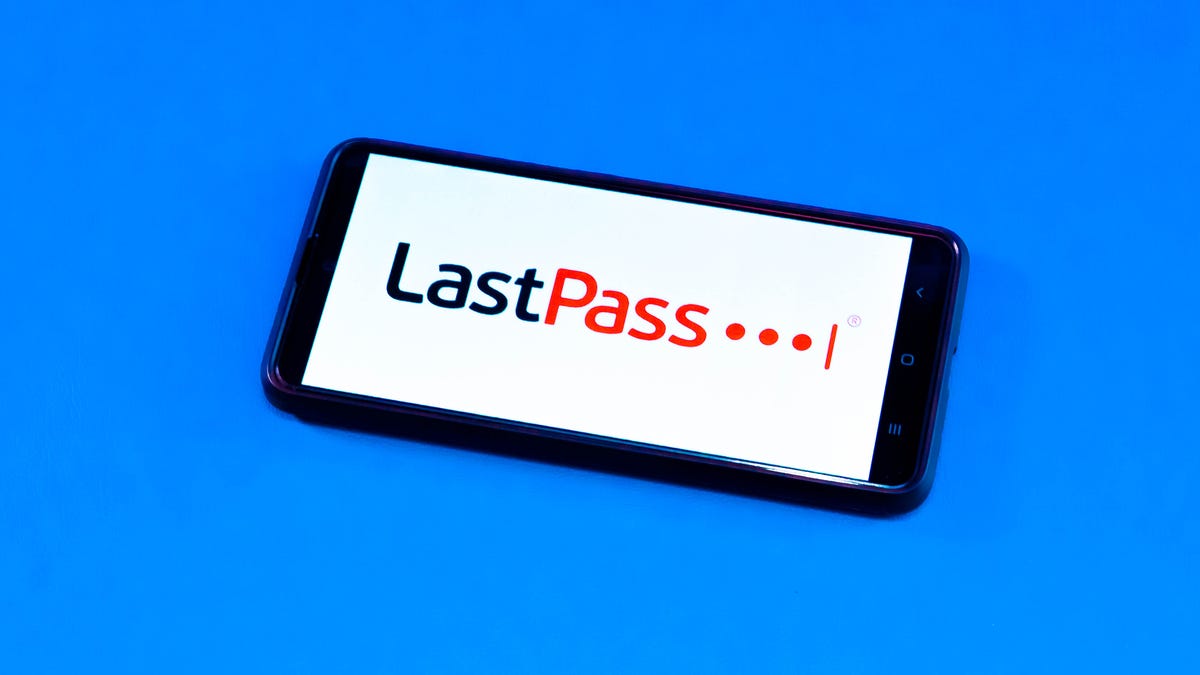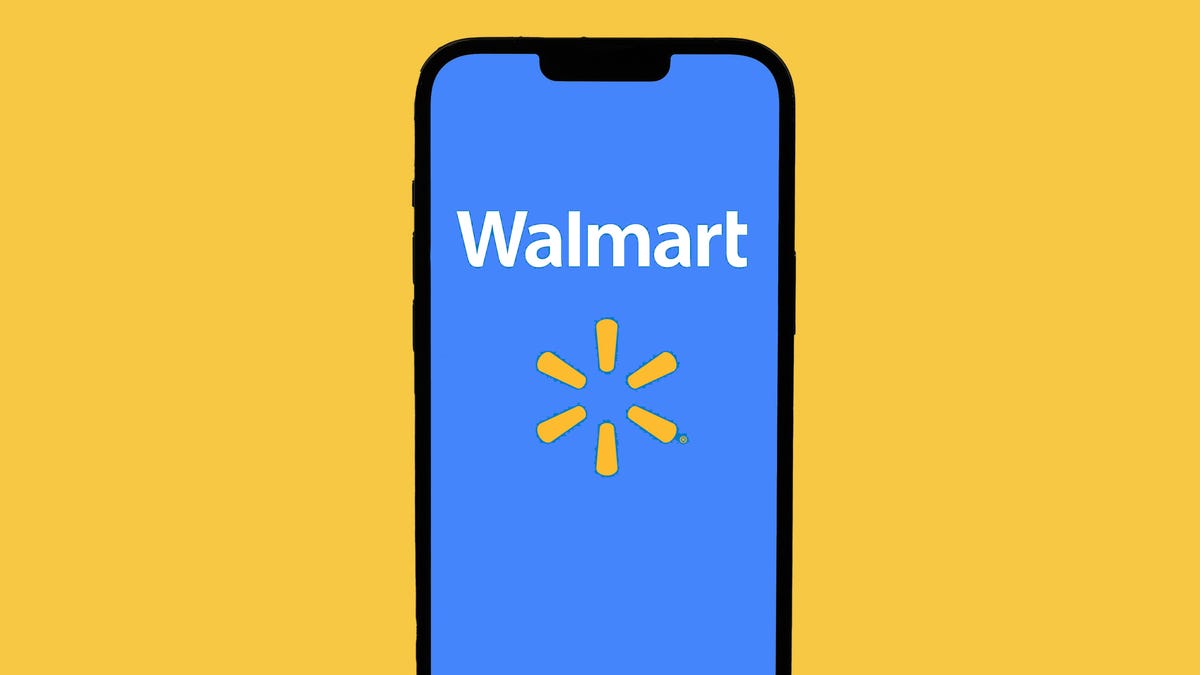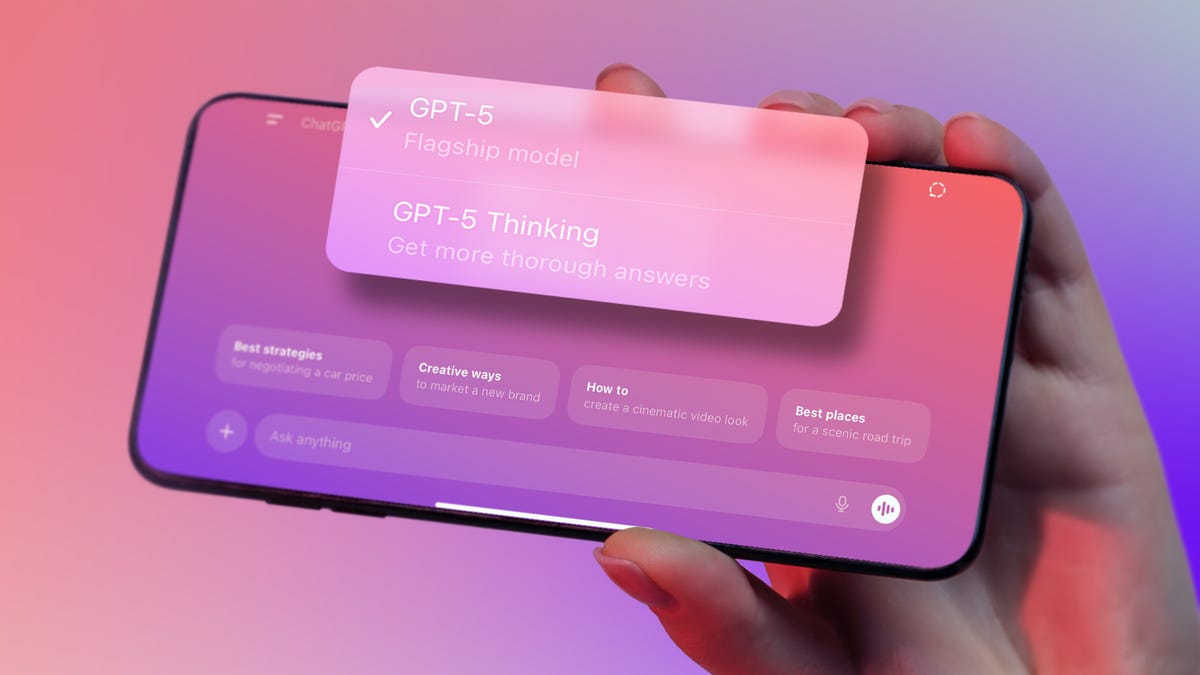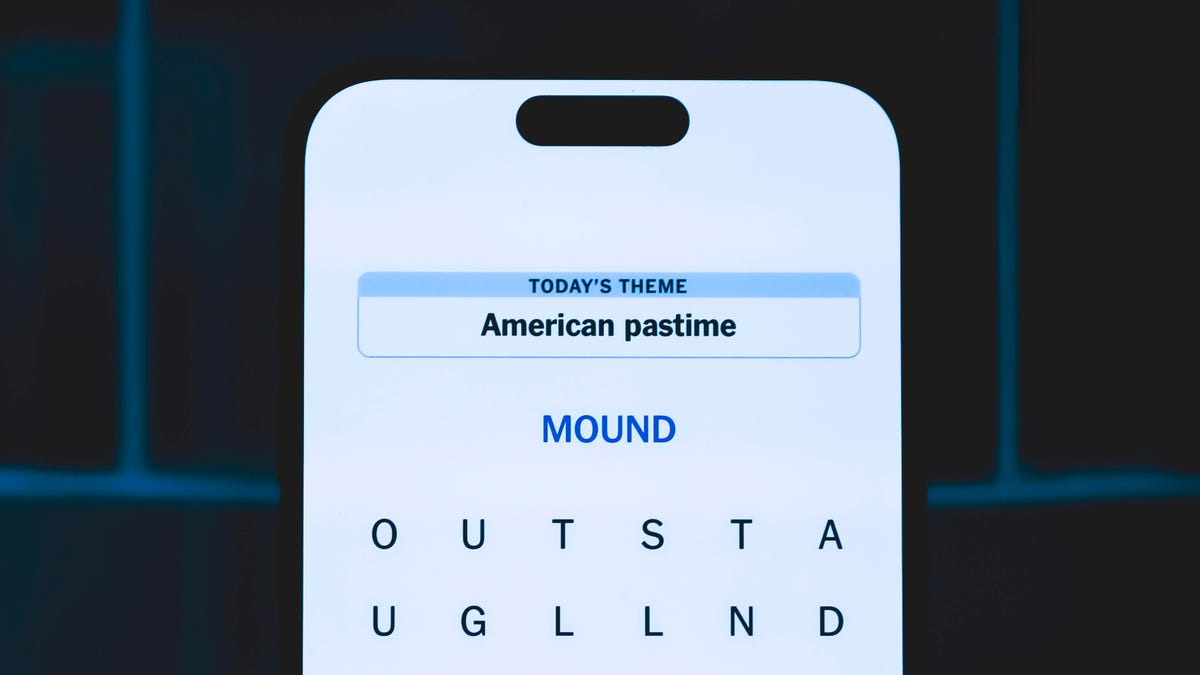Technologies
If You Use LastPass, You Need to Change All of Your Passwords ASAP
You’ll probably also want to find a different password manager, considering the severity of the latest LastPass data breach.

LastPass, one of the world’s most popular password managers, suffered a major data breach in December, putting customers’ online passwords at risk and endangering their personal data.
On Dec. 22, LastPass CEO Karim Toubba acknowledged in a blog post that a security incident the company first disclosed in August eventually led to an «unauthorized party» stealing customer account information and sensitive vault data. The breach is the latest in a lengthy and troubling string of security incidents involving LastPass that date back to 2011.
It’s also the most alarming.
An unauthorized party was able to gain access to unencrypted subscriber account information like LastPass usernames, company names, billing addresses, email addresses, phone numbers and IP addresses, according to Toubba. That same unauthorized party was also able to steal customer vault data, which includes unencrypted data like website URLs as well as encrypted data like the usernames and passwords for all of the sites customers have stored in their vaults.
If you’re a LastPass subscriber, the severity of this breach should have you looking for a different password manager, because your passwords and personal data are at serious risk of being exposed.
What should LastPass subscribers do?
The company didn’t specify how many users were affected by the breach, and LastPass didn’t respond to CNET’s request for additional comment on the breach. But if you’re a LastPass subscriber, you need to operate under the assumption that your user and vault data are in the hands of an unauthorized party with ill intentions. Though the most sensitive data is encrypted, the problem is that the threat actor can run «brute force» attacks on those stolen local files. LastPass estimates it would take «millions of years» to guess your master password — if you’ve followed its best practices.
If you haven’t — or if you just want total peace of mind — you’ll need to spend some serious time and effort changing your individual passwords. And while you’re doing that, you’ll probably want to transition away from LastPass, too.
With that in mind, here’s what you need to do right now if you’re a LastPass subscriber:
1. Find a new password manager. Given LastPass’ history with security incidents and considering the severity of this latest breach, now’s a better time than ever to seek an alternative.
2. Change your most important site-level passwords immediately. This includes passwords for anything like online banking, financial records, internal company logins and medical information. Make sure these new passwords are strong and unique.
3. Change every single one of your other online passwords. It’s a good idea to change your passwords in order of importance here too. Start with changing the passwords to accounts like email and social media profiles, then you can start moving backward to other accounts that may not be as critical.
4. Enable two-factor authentication wherever possible. Once you’ve changed your passwords, make sure to enable 2FA on any online account that offers it. This will give you an added layer of protection by alerting you and requiring you to authorize each login attempt. That means even if someone ends up obtaining your new password, they shouldn’t be able to gain access to a given site without your secondary authenticating device (typically your phone).
5. Change your master password. Though this doesn’t change the threat level to the stolen vaults, it’s still prudent to help mitigate the threats of any potential future attack — that is, if you decide you want to stay with LastPass.
LastPass alternatives to consider
- Bitwarden: CNET’s top password manager is a highly secure and open-source LastPass alternative. Bitwarden’s free tier allows you to use the password manager across an unlimited number of devices across device types. Read our Bitwarden review.
- 1Password: Another excellent password manager that works seamlessly across platforms. 1Password doesn’t offer a free tier, but you can try it for free for 14 days.
- iCloud Keychain: Apple’s built-in password manager for iOS, iPadOS and MacOS devices is an excellent LastPass alternative available to Apple users at no additional cost. iCloud Keychain is secure and easy to set up and use across all of your Apple devices. It even offers a Windows client, too, with support for Chrome and Edge browsers.
How did it come to this?
In August 2022, LastPass published a blog post written by Toubba saying that the company «determined that an unauthorized party gained access to portions of the LastPass development environment through a single compromised developer account and took portions of source code and some proprietary LastPass technical information.»
At the time, Toubba said that the threat was contained after LastPass «engaged a leading cybersecurity and forensics firm» and implemented «enhanced security measures.» But that blog post would be updated several times over the following months as the scope of the breach gradually widened.
On Sept. 15, Toubba updated the blog post to notify customers that the company’s investigation into the incident had concluded.
«Our investigation revealed that the threat actor’s activity was limited to a four-day period in August 2022. During this timeframe, the LastPass security team detected the threat actor’s activity and then contained the incident,» Toubba said. «There is no evidence of any threat actor activity beyond the established timeline. We can also confirm that there is no evidence that this incident involved any access to customer data or encrypted password vaults.»
Toubba assured customers at the time that their passwords and personal data were safe in LastPass’s care.
However, it turned out that the unauthorized party was indeed ultimately able to access customer data. On Nov. 30, Toubba updated the blog post once again to alert customers that the company «determined that an unauthorized party, using information obtained in the August 2022 incident, was able to gain access to certain elements of our customers’ information.»
Then, on Dec. 22, Toubba issued a lengthy update to the blog post outlining the unnerving details regarding precisely what customer data the hackers were able to access in the breach. It was then that the full severity of the situation finally came to light and the public found out that LastPass customers’ personal data was in the hands of a threat actor and all of their passwords were at serious risk of being exposed.
Still, Toubba assured customers who follow LastPass’s best practices for passwords and have the latest default settings enabled that no further action on their part is recommended at this time since their «sensitive vault data, such as usernames and passwords, secure notes, attachments, and form-fill fields, remain safely encrypted based on LastPass’ Zero Knowledge architecture.»
However, Toubba warned that those who don’t have LastPass’s default settings enabled and don’t follow the password manager’s best practices are at greater risk of having their master passwords cracked. Toubba suggested that those users should consider changing the passwords of the websites they have stored.
What does all of this mean for LastPass subscribers?
The initial breach ended up allowing the unauthorized party to access sensitive user account data as well as vault data, which means that LastPass subscribers should be extremely concerned for the integrity of the data they have stored in their vaults and should be questioning LastPass’s capacity to keep their data safe.
If you’re a LastPass subscriber, an unauthorized party may have access to personal information like your LastPass username, email address, phone number, name and billing address. IP addresses used when accessing LastPass were also exposed in the breach, which means that the unauthorized party could also see the locations from which you used your account. And because LastPass doesn’t encrypt users’ stored website URLs, the unauthorized party can see all of the websites for which you have login information saved with the password manager (even if the passwords themselves are encrypted).
Information like this gives a potential attacker plenty of ammunition for launching a phishing attack and socially engineering their way to your account passwords. And if you have any password reset links stored that may still be active, an attacker can easily go ahead and create a new password for themselves.
LastPass says that encrypted vault data like usernames and passwords, secure notes and form-filled data that was stolen remains secured. However, if an attacker were to crack your master password at the time of the breach, they would be able to access all of that information, including all the usernames and passwords to your online accounts. If your master password wasn’t strong enough at the time of the breach, your passwords are especially at risk of being exposed.
Changing your master password now will, unfortunately, not help solve the issue because the attackers already have a copy of your vault that was encrypted using the master password you had in place at the time of the breach. This means the attackers essentially have an unlimited amount of time to crack that master password. That’s why the safest course of action is a site-by-site password reset for all of your LastPass-stored accounts. Once changed at the site level, that would mean the attackers would be getting your old, outdated passwords if they managed to crack the stolen encrypted vaults.
For more on staying secure online, here are data privacy tips digital security experts wish you knew and browser settings to change to better guard your information.
Technologies
You’ll Soon Be Able to Buy Walmart Products Through ChatGPT
OpenAI’s chatbot already connects to Etsy and Shopify. Now you can buy bananas too.

OpenAI and Walmart will soon offer shopping via AI through ChatGPT, the retail giant said in a press release on Tuesday.
While using ChatGPT’s Instant Checkout feature, customers can buy groceries, electronics or other essentials within the chatbot interface.
Walmart has its own AI assistant in its app named Sparky. With Sparky, customers can ask questions about products and get summaries of reviews to find the best item.
Don’t miss any of our unbiased tech content and lab-based reviews. Add CNET as a preferred Google source.
«For many years now, e-commerce shopping experiences have consisted of a search bar and a long list of item responses. That is about to change,» Walmart CEO Doug McMillon said in a statement. «There is a native AI experience coming that is multi-media, personalized and contextual. We are running towards that more enjoyable and convenient future with Sparky and through partnerships including this important step with OpenAI.»
When asked for comment, Walmart referred to its press release. Walmart also said it wouldn’t discuss the financial terms of the agreement at this time.
«We’re excited to partner with Walmart to make everyday purchases a little simpler. It’s just one way AI will help people every day under our work together,» OpenAI CEO Sam Altman said in a press release.
OpenAI referred to Walmart’s press release when asked for comment.
The latest deal with Walmart comes as OpenAI tries to make ChatGPT an all-in-one shopping experience. AI chatbots are increasingly being used as vehicles for online shopping. They can synthesize reviews from across the internet and give people direct answers to shopping questions. Already, ChatGPT connects with Etsy and Shopify with its Instant Checkout feature, allowing people to buy directly. OpenAI also added more shopping features in ChatGPT Search earlier this year.
(Disclosure: Ziff Davis, CNET’s parent company, in April filed a lawsuit against OpenAI, alleging it infringed Ziff Davis copyrights in training and operating its AI systems.)
Technologies
OpenAI Will Loosen ChatGPT’s Mental Health Guardrails and Allow Erotica for Adult Users
Sam Altman said the company will ease limits for adults after rolling out age verification.

ChatGPT is treading cautiously right now, but the chatbot may become more risqué by the end of the year.
In recent weeks, the generative AI chatbot has been operating under somewhat stringent limitations, as OpenAI tried to address concerns that it was not handling sensitive mental health issues well. But CEO Sam Altman said in a post on X Tuesday that the company would ease some of those restrictions because it’s «been able to mitigate the serious mental health issues.»
Though Altman didn’t elaborate on what tools are being used to address the problem, OpenAI recently announced new parental controls in ChatGPT.
CNET reached out to OpenAI for details, but the company did not immediately respond to a request for comment. (Disclosure: Ziff Davis, CNET’s parent company, in April filed a lawsuit against OpenAI, alleging it infringed Ziff Davis copyrights in training and operating its AI systems.)
Other changes are also expected. Altman said the company could allow «erotica» for verified adult users as it implements an «age-gating» system, or age-restricted content, in December. The mature content is part of the company’s «treat adult users like adults» principle, Altman said.
Altman’s post also announced a new version of ChatGPT in the next few weeks, with a personality that behaves more like the company’s GPT-4o model. Chatbot users had complained after the company replaced 4o with the impersonal GPT-5 earlier this year, saying the new version lacked the engaging and fun personality of previous chatbot models.
«If you want your ChatGPT to respond in a very human-like way, or use a ton of emoji, or act like a friend, ChatGPT should do it (but only if you want it, not because we are usage-maxxing),» Altman wrote.
Don’t miss any of our unbiased tech content and lab-based reviews. Add CNET as a preferred Google source.
After OpenAI was sued by parents who alleged ChatGPT contributed to their teen son’s suicide, the company imposed an array of new restrictions and changes, including parental controls, alerts for risky behavior and a teen-friendly version of the chatbot. In the summer, OpenAI implemented break reminders that encourage people to occasionally stop chatting with the bot.
On Tuesday, the company also announced the creation of a council of experts on AI and well-being, including some with expertise in psychology and human behavior.
This comes as lawmakers and regulators are ringing the alarm on the risks AI tools pose to people, especially children. On Monday, California Governor Gavin Newsom signed new restrictions on AI companion chatbots into law. Last month, the Federal Trade Commission launched an investigation into several AI companies, including OpenAI.
Technologies
Today’s NYT Strands Hints, Answers and Help for Oct. 15 #591
Here are hints — and the answers — for the NYT Strands puzzle for Oct. 15, No. 591.

Looking for the most recent Strands answer? Click here for our daily Strands hints, as well as our daily answers and hints for The New York Times Mini Crossword, Wordle, Connections and Connections: Sports Edition puzzles.
Today’s NYT Strands puzzle is a fun one, once you understand the theme. Some of the answers are a bit tough to unscramble, so if you need hints and answers, read on.
I go into depth about the rules for Strands in this story.
If you’re looking for today’s Wordle, Connections and Mini Crossword answers, you can visit CNET’s NYT puzzle hints page.
Read more: NYT Connections Turns 1: These Are the 5 Toughest Puzzles So Far
Hint for today’s Strands puzzle
Today’s Strands theme is: Going up?
If that doesn’t help you, here’s a clue: Not an escalator, but…
Clue words to unlock in-game hints
Your goal is to find hidden words that fit the puzzle’s theme. If you’re stuck, find any words you can. Every time you find three words of four letters or more, Strands will reveal one of the theme words. These are the words I used to get those hints but any words of four or more letters that you find will work:
- ROTATE, LOBE, NOPE, RATS, STAR, SAME, LOSE, VOTE, BUTTE, SAMS, BAMS
Answers for today’s Strands puzzle
These are the answers that tie into the theme. The goal of the puzzle is to find them all, including the spangram, a theme word that reaches from one side of the puzzle to the other. When you have all of them (I originally thought there were always eight but learned that the number can vary), every letter on the board will be used. Here are the nonspangram answers:
- ALARM, OPEN, CLOSE, LOBBY, GROUND, BASEMENT
Today’s Strands spangram
Today’s Strands spangram is ELEVATORBUTTONS. To find it, look for the E that’s three letters to the right on the bottom row, and wind straight up, and then straight down.
-

 Technologies3 года ago
Technologies3 года agoTech Companies Need to Be Held Accountable for Security, Experts Say
-

 Technologies3 года ago
Technologies3 года agoBest Handheld Game Console in 2023
-

 Technologies3 года ago
Technologies3 года agoTighten Up Your VR Game With the Best Head Straps for Quest 2
-

 Technologies4 года ago
Technologies4 года agoVerum, Wickr and Threema: next generation secured messengers
-

 Technologies4 года ago
Technologies4 года agoGoogle to require vaccinations as Silicon Valley rethinks return-to-office policies
-

 Technologies4 года ago
Technologies4 года agoBlack Friday 2021: The best deals on TVs, headphones, kitchenware, and more
-

 Technologies4 года ago
Technologies4 года agoOlivia Harlan Dekker for Verum Messenger
-

 Technologies4 года ago
Technologies4 года agoiPhone 13 event: How to watch Apple’s big announcement tomorrow
